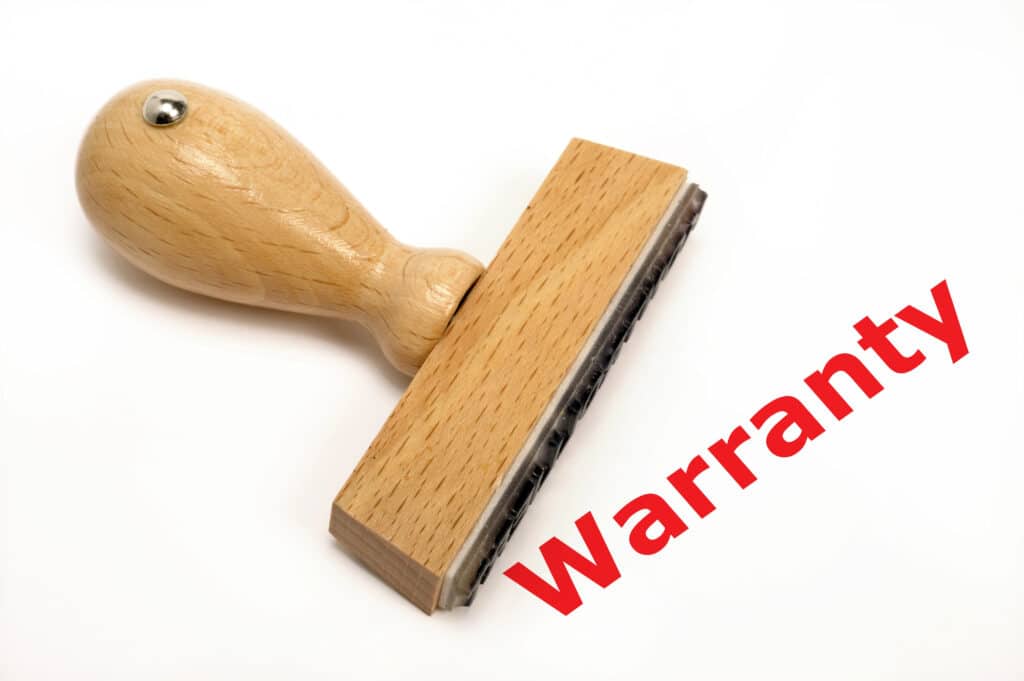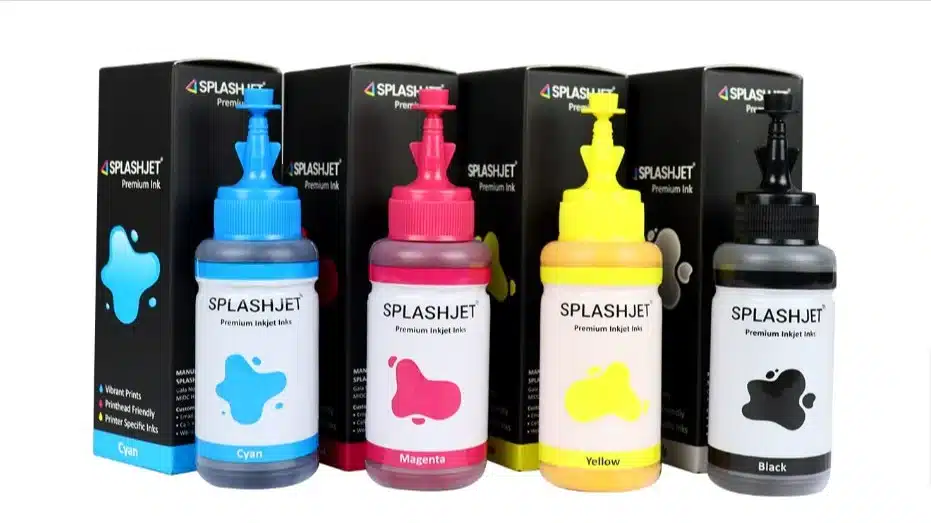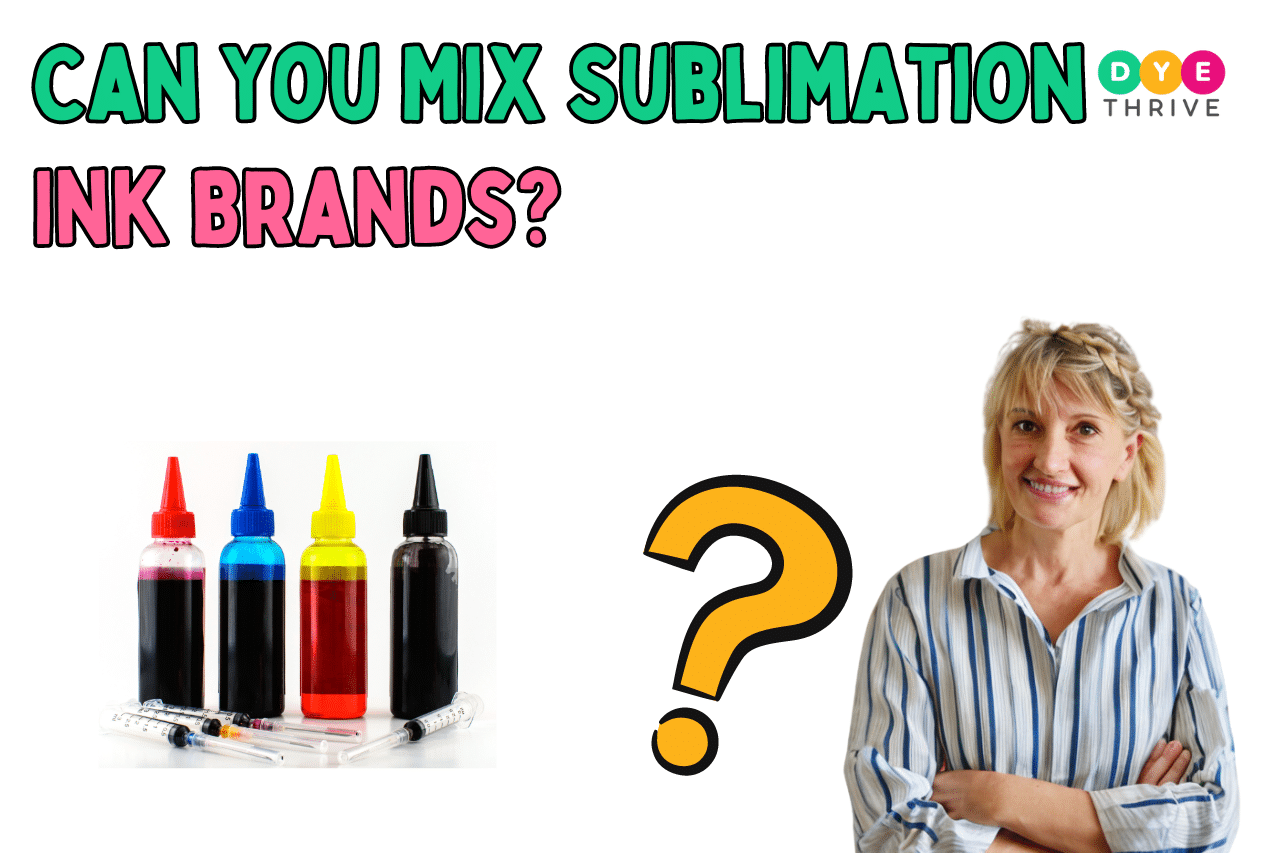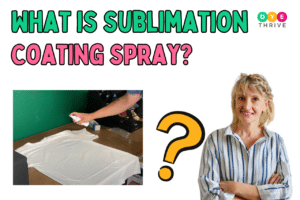Mixing sublimation ink brands has caused a lot of debate and confusion among artists, designers, and printing enthusiasts like ourselves.
Some say it’s a clever way to create new colors or save money on ink costs. But others warn that mixing ink brands can lead to big problems with your prints and even damage your printer.
In this article, we’ll take a close look at ‘Can you mix sublimation ink brands?’. You’ll learn about the potential risks of combining different sublimation inks but also get tips on how to safely mix inks if you decide to give it a try.
By the end, you’ll have all the facts to decide if mixing sublimation ink brands is the right choice for your printing needs.
So, let’s get started!
you may also like:
- Can You Sublimate on Silicone? (Explained!)
- How Do I Make My Sublimation Brighter? Pro Tips
- Butcher Paper vs Parchment Paper For Sublimation
- What Is A Sublimation Water Bottle? (Explained!)
can you mix sublimation ink brands?
While it’s technically possible to mix sublimation ink brands, it’s generally not recommended.
Sublimation inks from various manufacturers often have different chemical compositions and pigments which can lead to issues like color inconsistencies, ink curdling or clumping, and even clogged printheads when mixed.

This incompatibility can result in poor print quality, wasted materials, and potentially permanent damage to your printer.
Unless you are certain that the ink brands are compatible and have thoroughly tested the mixture on scrap materials first, it is advisable to stick with a single, reputable brand of sublimation ink to ensure consistent performance.
Potential Issues with Mixing Sublimation Inks
While the idea of mixing different brands of sublimation ink may seem appealing, it’s crucial to understand the potential risks and issues that can arise.
1. Color Inconsistencies and Inaccuracies
Different ink brands use varying formulations and pigments to achieve their colors. When you mix these dissimilar inks, you may end up with unpredictable and inconsistent color results that can ruin your carefully planned designs.

The colors may appear muddy, dull, or significantly different from what you envisioned, leading to frustration and wasted time and resources.
2. Chemical Incompatibility and Reactions
Sublimation inks from different manufacturers often have different chemical compositions and properties. Mixing them could cause unexpected reactions, leading to issues like clumping, curdling, or even separating.
These reactions can clog your printer’s printheads, potentially causing permanent damage that may require expensive repairs or replacement.
3. Printer Damage and Warranty Implications
If the mixed inks aren’t fully compatible with your printer’s internal components, it could lead to serious damage. The ink might corrode or clog delicate parts, affecting the printer’s performance or rendering it unusable.

Additionally, using mixed or unapproved inks may void your printer’s warranty, leaving you without coverage in case of any issues arising from the mixture.
4. Inconsistent Performance and Print Quality
Different ink brands may have varying levels of viscosity, drying times, and compatibility with specific substrates (materials you’re printing on).
Mixing them could result in inconsistent print quality, with some areas appearing faded, blotchy, or even failing to transfer properly onto the substrate. This can lead to disappointing results and wasted materials.
5. Shortened Printhead Life
Incompatible or improperly mixed inks can potentially shorten the lifespan of your printer’s printhead.

Over time, the buildup of incompatible ink residue can cause clogs, misfiring nozzles, or even complete printhead failure, necessitating costly replacements.
So, while the idea of mixing inks might seem like a cost-saving hack or a way to create unique color blends, the potential risks might not be worth it in the long run.
Tips for Successfully Mixing Sublimation Ink
If you’re still determined to experiment with mixing sublimation inks, here are some crucial tips to help minimize the risks:

the alternative of mixing sublimation ink brands
While mixing sublimation ink brands is generally not recommended, there are alternative solutions to consider if you’re looking to save money or experiment with new colors:
1. Stick with a Single Brand
The safest approach is to choose a reputable, high-quality sublimation ink brand and stick with it for all your printing needs.

This ensures consistent color quality, performance, and compatibility with your printer, reducing the risk of issues or damage.
Research different brands, read reviews, and consider factors like color vibrancy, ink cost per print, and customer satisfaction before making your choice.
2. Use Refillable Ink Cartridges
Some printer manufacturers offer refillable ink cartridges specifically designed for sublimation printing.
These allow you to purchase bulk ink at a lower cost per milliliter and refill the cartridges yourself, potentially saving you money in the long run.
However, be sure to use ink that is compatible with your printer model and follow the manufacturer’s instructions for refilling to avoid any problems.
3. Consider Alternative Printing Methods
If budget or compatibility concerns persist, you might want to explore alternative printing methods that don’t rely on direct sublimation printing.

For example, heat transfer vinyl (HTV) involves cutting vinyl designs and heat-pressing them onto garments, while direct-to-garment (DTG) printing uses specialized inks to print directly onto fabrics.
Another option is dye sublimation transfer paper, which allows you to print designs onto a special paper and then transfer them onto fabrics using a heat press.
4. Completely Switch Brands
If you’re unsatisfied with your current sublimation ink brand and want to try a new one, you can switch to a different brand altogether.
However, it’s crucial to thoroughly clean and flush your printer system following the manufacturer’s instructions before introducing the new ink.
This will eliminate any residual ink from the previous brand that could cause contamination or compatibility issues.
frequently asked questions
Below are a few frequently asked questions to deepen your understanding:
Can I switch sublimation ink brands?
Yes, you can switch to a different brand of sublimation ink, but it’s crucial to thoroughly clean and flush your printer system before introducing the new ink.
Follow the manufacturer’s instructions carefully to avoid any residual ink contamination or damage to your printer.
Is all sublimation ink the same?
No, not all sublimation inks are created equal. Different brands may use varying formulations, pigments, and chemical compositions.
This can result in differences in color vibrancy, print quality, and compatibility with specific printers or substrates.
Wrapping up
Mixing sublimation ink brands might seem like a tempting idea, especially if you’re looking to save money or create unique color combinations.
However, as we’ve learned, it’s generally not recommended due to the potential risks of color inconsistencies, chemical incompatibilities, and even printer damage.
While there are tips and precautions you can take to minimize these risks, the safest approach is often to stick with a single, reputable brand of sublimation ink. This ensures consistent performance and optimal print quality.
If you’re still interested in exploring new colors or saving money, consider alternatives like refillable ink cartridges, alternative printing methods, or completely switching to a new ink brand (but be sure to properly clean your printer first).




